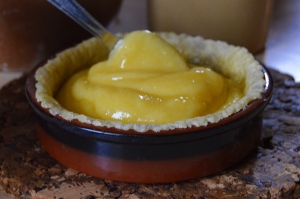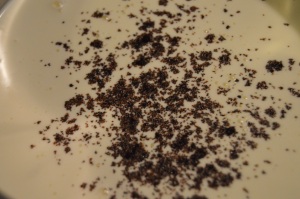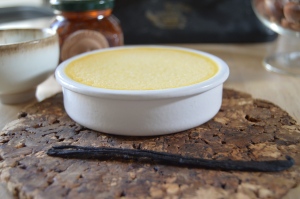Though French recipes for the tarte au citron date back to about 1651, this dessert is actually Mediterranean and probably comes from Italy. There were very few tart fillings in France that consisted of anything other than actual fruit pieces until the lemon tart, and it was via Italy that lemons arrived in Europe from Asia. I’ll stop talking about lemons now but if you ever fancy a lemon festival, there’s a French town close to the border of Italy that holds a famous Fête du Citron annually! This recipe is as easy as it is tasty but is pretty zingy! Make sure to add some sweetened cream or crumbled meringue!
Serves: 4
Ingredients/equipment:
Pâte Sucrée – 120 g softened butter – 80 g icing sugar – 1 vanilla pod – 25 g almond powder – 1 pinch of salt – 1 medium-large egg – 200 g of flour – Spatula – Foil (preferred but not necessary)
Lemon filling – 4 lemons – 120 g of sugar (or more if you can’t handle the sour!) – 2 medium-large eggs – 15 g cornstarch
1. Sift the icing sugar into the softened butter. Add the ground almonds, the vanilla extract and the salt. Combine everything with a spatula and the mixture should eventually become creamy. Add the egg, continue to mix, then proceed to sift in the flour.
2. Continue folding in the flour gently into the dough. Considering this dough contains a higher butter to flour ratio, it’s very important to let it rest for at least 2 hours in the fridge, otherwise it’ll be too difficult to work with. After the dough has rested, you can knead it and roll it out.
3. After this point, you should press the dough into your dish (lining the dish with foil will enable you to ease it out with less difficulty once it’s cooked), prick it with a fork and put it in the fridge half an hour. Preheat your oven to 180 degrees and bake for 15-20 minutes.
4. While the pie shell is baking, grate the zest of 2 lemons into a saucepan, and mix this with the juice of all four of the pressed lemons along with the sugar. Dissolve the sugar by heating and stirring the mixture. Make sure to keep stirring and then add the cornflour (if you need to then switch to a fork or whisk to keep the mixture smooth).
5. Keep the pan on a low heat. Beat two eggs in a ramekin and temper them slightly before adding them to the saucepan.
6. Pour the eggs into the lemon juice mixture and continue to stir over a low heat. When the mixture is smooth and thick, stop cooking, pour the filling into the pie shell and leave to refrigerate for another hour or so!





